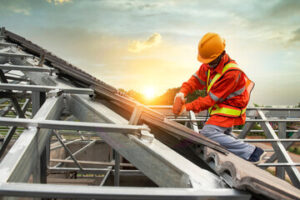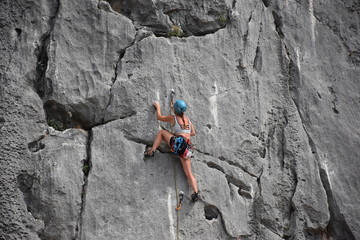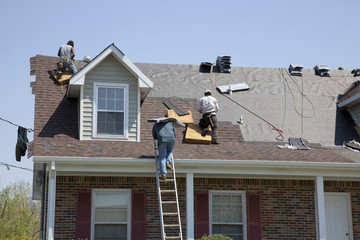A regular maintenance program is the best way to keep your roof in good condition. It can help prevent leaks and other problems caused by weather, debris, and age.

A routine inspection includes checking for missing shingles, signs of wear, and attic insulation. It also involves cleaning gutters, removing debris, and inspecting and re-sealing flashing around chimneys, vent pipes, and skylights. Contact Five Star Roofing and Contracting for professional help.
Weather can cause damage and impact your roof’s performance. For instance, poor insulation can affect indoor temperatures and contribute to ice dams, while wind-driven snow can add stress to the roof system. Annual inspections identify and address any issues related to the weather before they become major problems.
In addition to removing debris, clearing drains and reviewing the condition of gutters, it’s important to consider upgrading or adding insulation. This can improve energy efficiency, protect the roofing materials from moisture and mold, and help prevent ice dams and ponding water that can damage a home’s structure and foundation. Also, review and repair penetrations like chimneys, pipes, skylights, vents and air conditioning units. These areas are particularly vulnerable to leaks during high-wind storms. Inspect the flashing around these penetrations, and ensure they are secure.
Debris
Debris buildup on the roof can be a big problem. It can trap moisture on the roof, causing rot and mold. It can also puncture shingles and roofing materials, resulting in leaks. There are three main types of debris that can affect your roof.
Small building components such as antennas, shutters, fences, porch posts, and nails can be blown by high winds onto your roof. These debris can bruise and damage your shingles, especially in the case of nails that penetrate the underlayment. Debris from other properties that have been ripped off by the wind may be blown onto your roof, as well.
Tree debris is another significant issue. Leaves and pine needles that accumulate on the roof can retain moisture, accelerating deterioration of shingles. This can also cause rot and attract insects. It is important to keep trees away from the house, and to have them trimmed regularly so that branches do not hang over the roof.
Bird droppings and squirrel nesting materials can also clog the roof, preventing ventilation and leading to moisture problems inside the home. Moss that grows on the shaded areas of the roof can also rot and lead to leaks. It is important to remove moss, using a fungicide or bleach solution, and regularly sweep the roof to prevent it from returning.
Leaks can occur when flashing, which is the metal or plastic strips around vents, chimneys, and skylights, deteriorates due to weather exposure. Checking and resealing the flashing on a regular basis can help prevent leaks and prolong the life of your roof.
While removing debris on your own can be an affordable option, it is always best to have a professional do it. A trusted residential roofing contractor will know the proper methods to safely clean and inspect your roof. It is important to use a ladder with a stabilizer and to wear sturdy shoes, safety goggles, and a harness if necessary. It is also a good idea to use a broom or soft-bristle rake, rather than something with hard bristles that could scratch the surface of the roof.
Trees
Having trees in the neighborhood offers numerous benefits for homeowners, including shade and aesthetics, reducing energy costs by regulating indoor temperatures, and improving air quality. They also provide habitats for wildlife and contribute to a sustainable ecosystem. However, they can also pose significant threats to roofs when situated too close to a home. Besides the obvious physical damage they can cause, tree branches may drop debris and leaves that can lead to water leaks. In addition, they can clog gutters and encourage the growth of algae or moss. Taking precautionary steps to mitigate these risks is vital for maintaining a healthy roof.
The most significant threat to a residential roof from trees is the possibility of physical damage. Trees can drop heavy limbs during storms, which can splinter or break shingles and other roofing materials. They can also scrape against the roof during windy conditions, causing wear and tear that can lead to leaks or structural damage.
A common cause of this issue is poorly trimmed or overhanging trees. A professional arborist can prune a tree’s branches to reduce the risk of damage to the roof. Pruning should take place regularly to keep the branches at a safe distance from the roof, but it should also be done with careful consideration to the health of the tree.
When choosing the location of a new tree, it is important to consider its mature size and root system. Some species, like willows and maples, have aggressive roots that can extend well beyond the property boundaries and damage foundations and other structures. Others, like Southern Magnolia, can develop brittle branches that are prone to breaking in high winds.
The most effective way to mitigate this risk is by working closely with a local roofing company, like Done Rite Roofing, to perform regular roof maintenance and inspections. A professional roofer can help you identify any problems and recommend solutions, including trimming overhanging branches, addressing moisture accumulation, and removing debris. Likewise, you should work with an experienced arborist to ensure the safety and proper health of nearby trees.
Wind
Wind is one of the most significant threats to your home’s roof. It can lift shingles, blow off gutters and carry debris, which exposes the underlying materials to further damage and water infiltration. In severe cases, high winds can cause structural damage and require extensive roof repairs or replacement. Regular inspections, preventive measures and prompt repair of wind damage are the best ways to ensure your roof is a sturdy protector against the elements.
The primary areas to check for wind-related damage are the eaves, soffit and fascia, and the flashing around chimneys, vents and skylights. Strong gusts can also impact the roofing membrane for flat or low-slope roofs, especially at seams and corners. Inspect the soffit and fascia for damage, rot, fungus or mold, as well as leaks in the eaves.
Look for shingle tabs that are raised by uplift, indicating a weakening of the material. Loose or missing shingles are another clear sign of damaged roofing materials, as well as shingles that are curling or buckling in the wind. Check the eaves and rakes for loose or dislodged gutters, as well as flashing that is exposed and vulnerable to moisture.
Be sure to document any and all wind-related damage with photographs as soon as it is safe to do so, so that you can file an insurance claim for repairs or replacement. Most homeowner’s insurance policies cover wind damage, and working with a reputable roofing contractor who is familiar with handling insurance claims can save you stress and money. Additionally, ensuring your roof is in good condition can reduce the risk of wind-related damage and increase its lifespan.


